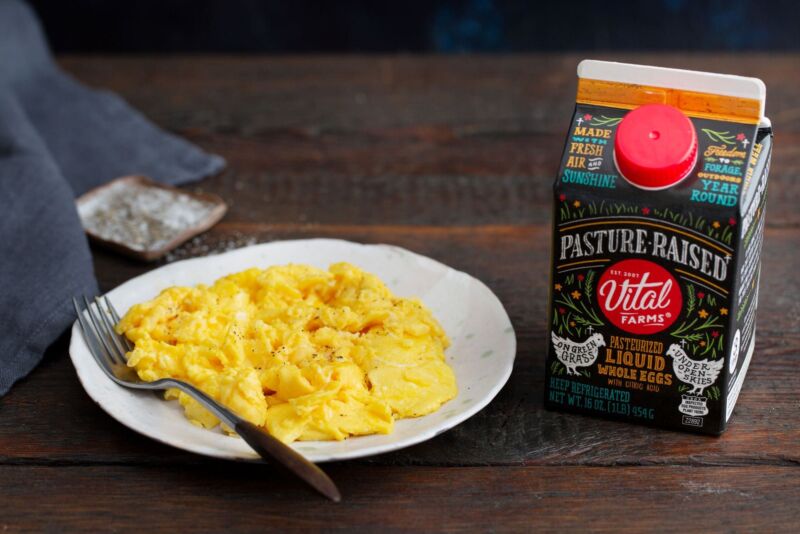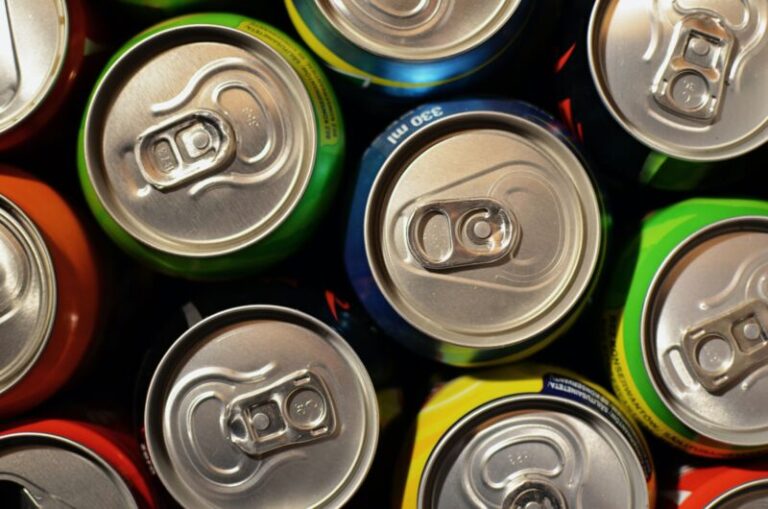What are Liquid Eggs and How Are They Made?
Liquid eggs are a convenient alternative to regular shell eggs that offer similar nutritional value. As the name suggests, liquid eggs come pre-cracked and pre-mixed in liquid form inside cartons or plastic jugs. They can be readily poured and measured for cooking and baking recipes that call for eggs. Liquid eggs provide the nutritious protein content of eggs in an easy-to-use form.
In this article, I’ll go over everything you need to know about liquid eggs – what they are, how they’re made, their advantages, and how to use them. Whether you’re a home cook or professional chef, read on to learn why liquid eggs may be a great addition to your kitchen.
What Are Liquid Eggs?
Liquid eggs refer to pasteurized and homogenized whole eggs that have been pre-cracked from their shells into a liquid state. They come in convenient packaging like milk cartons or jugs that can be purchased from most grocery stores.
The term “liquid eggs” also encompasses liquid egg whites and liquid egg yolks that have been separated. So you can find liquid versions of whole eggs, egg whites only, or egg yolks only.
Liquid eggs are typically made from regular eggs sourced from poultry farms. The eggs are carefully cracked, the yolks and whites pasteurized separately, and then remixed together in equal proportions to create liquid whole eggs.
Pasteurization involves heating the liquid eggs enough to kill potentially harmful bacteria like Salmonella, but not so much that it cooks the eggs. This allows liquid eggs to have a longer shelf life than regular shell eggs.
How Are Liquid Eggs Made?
Liquid eggs go through a specific commercial production process in order to make them safe and shelf-stable. Here are the main steps:
Pasteurization
Pasteurization is the most important step, which involves rapidly heating the liquid eggs to a minimum of 130°F for at least 3.5 minutes. This eliminates any harmful microorganisms, especially Salmonella.
The liquid eggs are then rapidly cooled down to 40°F or less. This pauseurization and rapid cooling help destroy bacteria while preserving the quality of the eggs.
Separation of Yolks and Whites
First, shells eggs are thoroughly washed and screened for any defects. They are then mechanically cracked and the yolks are separated from the whites using centrifugal forces.
The yolks and whites are pasteurized separately at different temperatures customized to their pH levels.
Blending into Liquid Whole Eggs
After pasteurization, the egg yolks and whites are remixed together at a 1:1 ratio to produce liquid whole eggs. Additional ingredients like salt or citric acid may be added.
The resulting liquid eggs are homogenized to achieve a uniform consistency and poured into cartons or jugs. The packages are sealed and either refrigerated or frozen for distribution.
Make Your Own Liquid Eggs
You can also easily make liquid eggs at home with just a few ingredients:
Ingredients
- Bottle or liquid container
- Water
- Egg powder (store-bought or homemade)
Instructions
- Pour water into a bottle or container
- Add egg powder gradually while shaking
- Shake vigorously until powder becomes liquid eggs
For homemade egg powder, fully cook eggs and dehydrate into a powder using a food dehydrator. Blend to a fine consistency.
Liquid Eggs vs Regular Eggs
Liquid eggs share similarities with regular raw eggs in shell, but also have some key differences:
Similarities
- Both contain complete nutrition from egg yolks and whites
- Can be cooked and incorporated into recipes in similar ways
- Provide the same high-quality protein content
Differences
- Liquid eggs have a thinner, more fluid consistency
- Liquid eggs are pre-cracked, packaged, and pasteurized for safety
- Limitations like inability to boil, poach, or cook over-easy
Benefits of Liquid Eggs
Here are some great advantages that liquid eggs offer:
Longer Shelf Life
Pasteurization allows liquid eggs to remain fresh for up to 4 weeks refrigerated or 1 year frozen. Regular shell eggs last only 3-5 weeks refrigerated.
Convenience
Liquid eggs are fast and easy to pour out for recipes. No more cracking and separating shells!
Consistent Measurement
Measuring liquid eggs for baking is much more accurate and consistent compared to variably sized regular eggs.
Safety
Pasteurization eliminates the risk of Salmonella and bacteria from raw egg shells and surfaces.
Nutrition Information
Liquid eggs have very similar nutritional values compared to regular raw eggs:
- Protein: Around 6 grams per large egg
- Fat: 5 grams per large egg
- Cholesterol: 185 mg per large egg
However, liquid egg whites contain slightly less fat and cholesterol since the yolk is removed.
Ultimately, the nutritional value depends most on your specific recipes and preparation methods.
Choosing Liquid Eggs or Regular Eggs
Here are some factors to consider when deciding between liquid or regular shell eggs:
Family Size
Liquid eggs work well for feeding large families, while shells eggs may be a better value for 1-2 people.
Budget
Liquid eggs tend to be more expensive than buying eggs by the dozen. Compare prices at your grocery store.
Recipes
Check if your recipes will work with liquid eggs. Some recipes depend on egg properties achieved through boiling, frying, or poaching eggs in the shell.
Using Liquid Eggs
Liquid eggs can be used in all the ways you would use regular eggs:
Cooking
Try liquid eggs scrambled, fried, in omelets, frittatas, quiches, etc. Adjust any recipes by converting shell egg weights to liquid egg volumes.
Baking
Seamlessly measure out liquid eggs in baked goods like cakes, cookies, muffins, and bread.
Bulk Cooking
Restaurants, cafeterias, and caterers can efficiently cook with liquid eggs in large batches.
Storage
Keep refrigerated and use within 4 weeks. Can also freeze for up to 1 year.
Recipe: Eggs Ratatouille
This delicious recipe takes advantage of the convenience of liquid eggs combined with fresh vegetables:
Ingredients
- 1 cup liquid whole eggs
- 1 tablespoon olive oil
- 1/2 onion, diced
- 1 small eggplant, cubed
- 1 zucchini, sliced
- 1 bell pepper, chopped
- 2 tablespoons pasta sauce
- Salt and pepper to taste
Instructions
- Heat oil in a skillet over medium heat.
- Add onion and cook for 2 minutes until softened.
- Add eggplant, zucchini, and bell pepper. Cook for 5 minutes.
- Pour in liquid eggs and pasta sauce. Season with salt and pepper.
- Cook while stirring frequently until eggs are fully set.
- Serve hot and enjoy!
Conclusion
Liquid eggs provide an easy way to enjoy the protein-packed nutrition of eggs for cooking and baking. While not necessarily a 100% perfect substitute, liquid eggs can be used in many of the same ways as traditional shell eggs.
The pasteurization process gives liquid eggs a long shelf life, and the pre-cracked packaging makes measuring and pouring effortless. Try incorporating liquid eggs into your own kitchen routine! Just remember proper storage and handling to keep them fresh.






